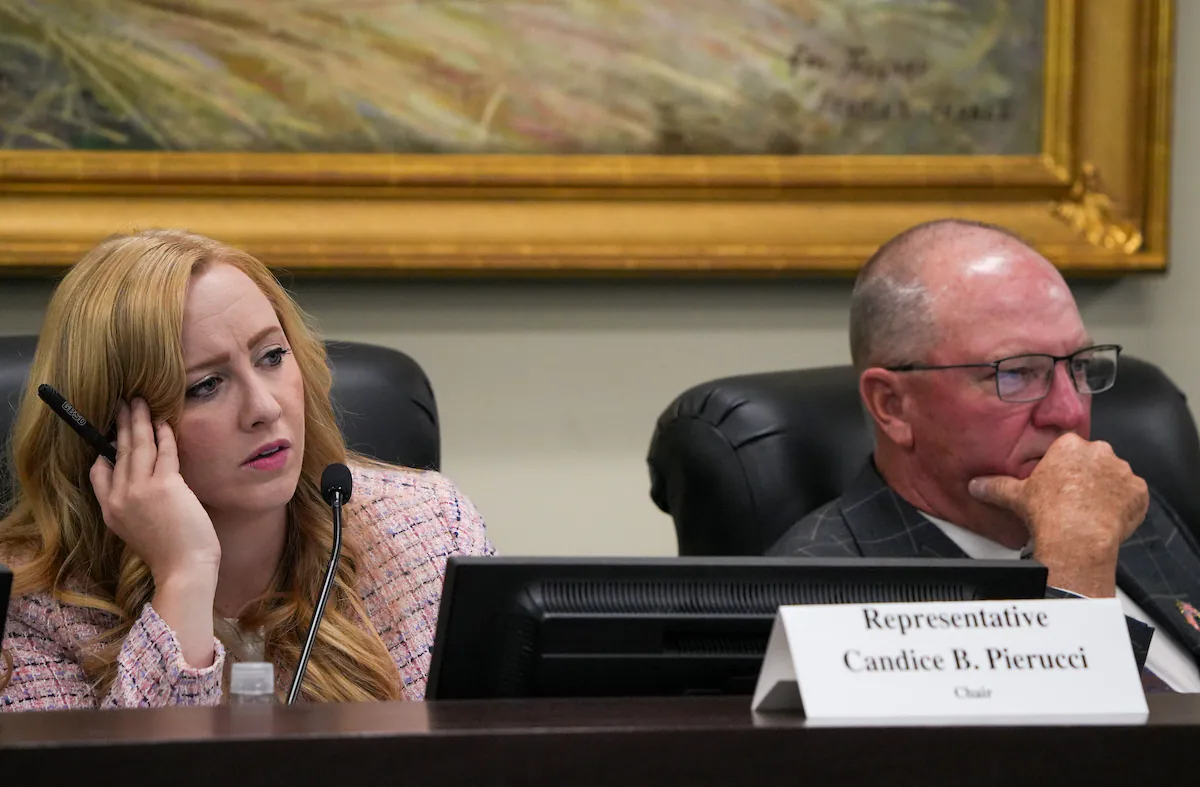
Utah lawmakers will pick a new state congressional map early next month, with a committee set to make a final recommendation Oct. 6, immediately followed by a special session the same day to adopt the new boundaries.
A ten-day public comment period on the proposed new maps begins Friday, as the committee has until the end of the day Thursday to add any additional maps. After the Legislature approves a map in October’s special session, its pick will have to be approved by a judge before it is official. In 2021, the last time the Legislature adopted maps, it heard public comment before publishing a map, which ultimately was released on a Friday and passed by the following Tuesday.
Members of Utah’s Legislative Redistricting Committee discussed six proposed maps — five of them from the Republican majority — during Wednesday’s hearing, and heard from an expert on the map submitted by Democrats before taking comments from about 25 members of the public.
“We are going above and beyond by having public comment today in committee, and having it on Monday,” House Majority Whip Rep. Candice Pierucci, R-Herriman, who serves as the committee’s co-chair, said Wednesday. “That was not part of the court order, but we wanted to make sure we followed our legislative process.”
In their review of the six maps, lawmakers focused on how the maps kept communities of interest together and how they split cities and counties across the state. Among the communities of interest they considered in the development of the maps, they said were tribal lands and reservations, military installations, institutions of higher education and Duchesne and Uintah counties in the Uinta Basin.
“We recognize that there are thousands of definitions around community of interest. We recognize that,” committee co-chair Sen. Scott Sandall, R-Tremonton said. “Those were the four that we felt rose to a more objective standard, and that we could then use those four to try to help in picking and developing a map.”
Sandall also indicated that lawmakers would not consider any of the maps that had been submitted by the public. He said that the law prohibits maps drawn using partisan data and, because of the compressed timeline, there would be no way to ensure the public’s maps did not employ party information.
In reality, the law only prohibits the Legislature and the independent redistricting commission created under Proposition 4 from using things like voting records and election results. As of Wednesday afternoon, members of the public had submitted 19 maps — nine of them produced by Stuart Hepworth, a South Jordan resident.
The analysis of the five maps previously released by the Republican majority found that all five would create at least one seat that was at least marginally competitive. Four of the five would produce a highly competitive seat, with Option B yielding a seat that would slightly favor a Democratic candidate.
A new map sponsored by Salt Lake City Sen. Luz Escamilla and Millcreek Rep. Doug Owens — the two Democrats on the redistricting committee — creates the safest Democratic district out of any of the proposals, with an urban-centric District 3 covering the north half of Salt Lake County. It would favor a Democratic candidate by nearly 17 percentage points, according to an analysis of past voting patterns by The Salt Lake Tribune.
Prior to the public comment period, Daniel Magleby, a SUNY Binghamton professor and redistricting researcher, testified about the map submitted by the Democratic minority, which he helped to construct.
The proposed map would split four counties — Davis, Morgan, Salt Lake and Utah — and 13 municipalities, and its construction, he told the committee, “falls well within the accepted range of what we would expect from a neutral redistricting process.”
Magleby’s testimony grew tense, however, when Rep. Calvin Roberts, R-Draper, read a social post from Magleby in 2021 after Utah Gov. Spencer Cox had decided not to veto the congressional map passed by the Legislature that year.
“This is straight out of the authoritarian playbook,” Magleby wrote at the time. “Step 1: rig the system to systematically exclude the opposition. Step 2: gaslight the opposition and say that they are free to compete in the rigged system you set up. Shameful.”
“I think a lot of Utahns are going to find that language inflammatory, especially against the backdrop of our current political environment,” Roberts said. “Do you think this Legislature is authoritarian?”
Magleby said he had no recollection of the post, and added, “Let’s be clear about what’s at stake here. … This gets at the core of our democracy — how it is that we represent people.”
“If we’re going to push forward a map that systematically discriminates against people of any particular type, whether that’s a partisan type, whether that’s a racial type, whether that’s anything else, religious [type],” he said, “yes, that is a tactic of authoritarianism.”



